Table of Contents

Introduction
Embarking on a wellness journey isn’t just a passing endeavor; it’s a commitment to nourishing your body and mind with the essential nutrients that forge the path to optimal health. Superfoods are the beacons of this nutritional odyssey, packed with vitamins, minerals, and antioxidants that synergistically enhance your overall well-being. However, it’s not merely about knowing which foods to choose; the secret lies in understanding their profound benefits and learning how to seamlessly integrate them into your daily regimen.
In this comprehensive guide, we’ll unlock the potential of six key superfoods that stand out in the quest for vitality and longevity. These carefully selected superfoods go beyond the ordinary, offering an array of health benefits that can bolster your immune system, invigorate your metabolism, and confer protection against chronic diseases. So let’s elevate the canvas of our plates with vibrant berries, leafy greens, nutrient-dense nuts and seeds, heart-healthy avocados, protein-rich quinoa, and the ancient medicinal brew of green tea. As we delve deeper into the world of superfoods, prepare to transform your diet into a powerful ally against life’s challenges, crafting a revitalized version of yourself that’s ready to face any obstacle with energy and grace.
Understanding Superfoods and Their Importance in Your Diet
Superfoods, contrary to the myth, are not born out of marketing hype. Instead, they are nutritionally powerful foods that pack a robust punch for their size. Think of them as the all-stars of the nutritional world. They don’t wear capes or leap tall buildings, but their benefits to our health and wellbeing are truly heroic.
These foods earn their super status due to their high content of vitamins, minerals, and antioxidants, nutrients that our bodies crave for performing vital functions. With each bite, you’re fortifying your body with compounds that foster health, fight off harmful toxins, and keep chronic diseases at bay. It’s not about tossing away all your favorite foods but ensuring that these nutrition titans exist prominently within your food repertoire.
But it’s more than just what superfoods are that makes them worthy of attention; it’s their myriad health benefits that elevate them to the status of super. These foods are linked to a healthier heart, increased vitality, improved digestive health, and sharper mental acuity. They also offer the benefit of being whole, natural foods that are minimally processed, devoid of the additives that many processed foods contain.
While superfoods alone can’t compensate for a poor diet, they can significantly augment a balanced lifestyle rooted in a diverse, nutritious diet. The true power of superfoods lies in their ability to supplement your diet, complimenting a broad range of foods in delivering the entire spectrum of nutrients essential for optimal health. As we transition further into our exploration of superfoods, remember this: nutrition isn’t about absolutes; it’s about incremental growth and consistent, positive dietary habits.
The Mighty Berries: Nature’s Sweet Antioxidant Gems
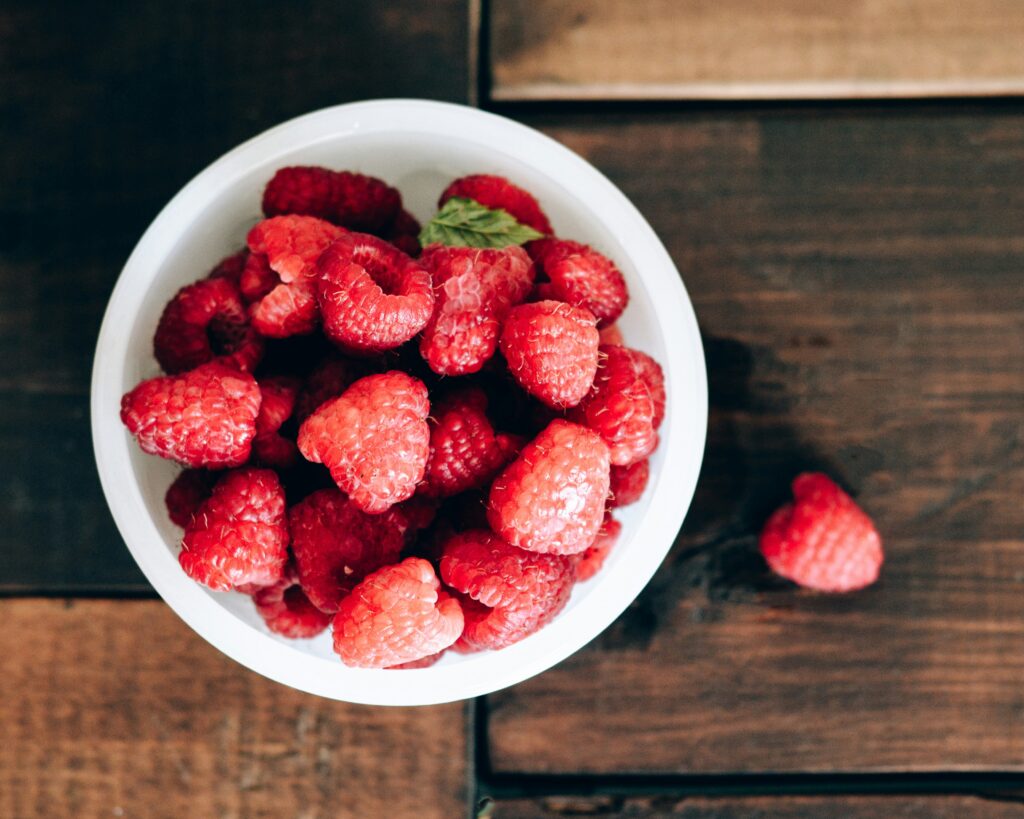
Berries may be small, but they are a formidable force in the realm of health, sparking a revolution one tiny fruit at a time. Whether it’s the deep blues of blueberries, the ruby reds of strawberries, or the vibrant purples of blackberries, each type of berry brings its unique symphony of nutrients to the table. These little wonders are more than just pleasing to the palate; they are packed with vitamins, fibers, and particularly rich in antioxidants, which help in waging war against oxidative stress and inflammation.
Dive into the treasure trove of health benefits that berries offer, and you’ll find compelling evidence of their power. Blueberries, for instance, are not just a feast for the eyes; they’re a boon for brain health, potentially slowing cognitive decline and improving memory and motor function. Strawberries, on the other hand, with their high vitamin C content, serve as a protective shield, bolstering your immune system while delighting your taste buds.
Moreover, the anthocyanins that give berries their signature hues do more than paint a pretty picture. These potent compounds have been linked to a reduced risk of cardiovascular disease. They work quietly yet persistently within your veins and arteries, supporting heart health and improving your circulatory system’s resilience.
Transitioning from a sweet delight for the senses to a powerhouse of well-being, it’s clear that incorporating a variety of berries into your diet can be a game-changer for your health. As we continue to explore the impactful nature of berries, let’s remember that they represent nature’s kindness, offering us a delightful way to care for our bodies without compromising on flavor or enjoyment.
Leafy Greens: The Cornerstone of Nutritional Wellness
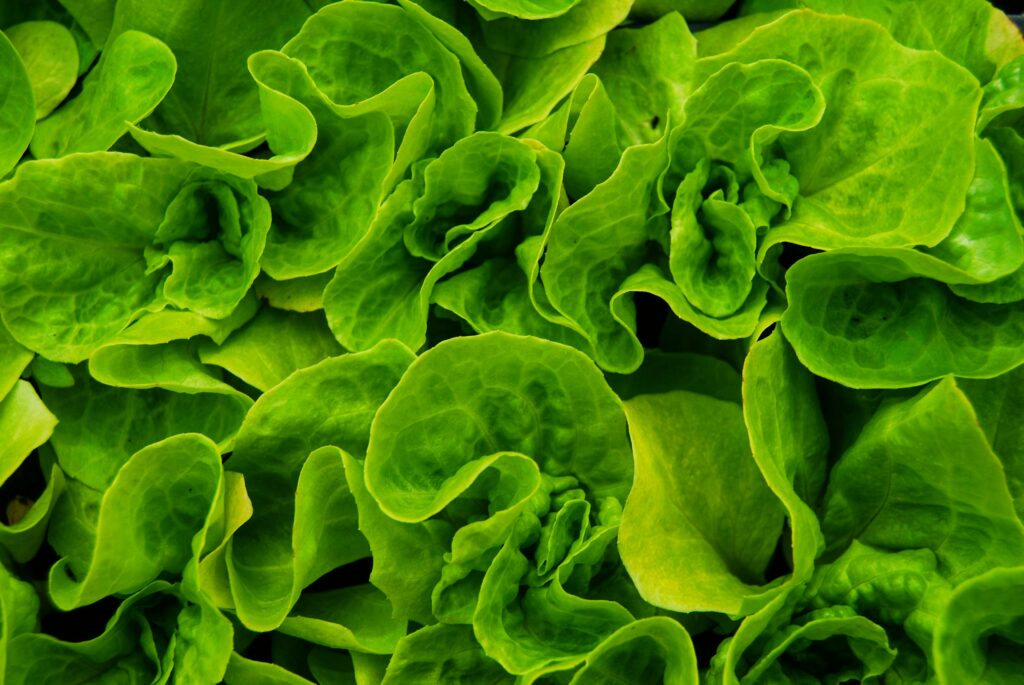
Leafy greens stand as the pillars of a health-conscious diet, underpinning our quest for nutritional wellness with their lush bounty. From the rich, emerald spirals of spinach to the ruffled edges of kale, these vegetables are a testament to the enduring power of simplicity in nature. Each leaf is a repository of essential vitamins, like A, C, and K, along with minerals such as iron and calcium, which are vital for maintaining a body in prime condition.
Furthermore, leafy greens are not merely dietary staples; they are versatile allies in the kitchen. Imagine the refreshing crispness of romaine lettuce in a salad, the tender texture of sautéed Swiss chard, or the robust flavor of collard greens in a savory stew. They glide effortlessly into any meal, enhancing dishes with their nutritional profile and adding layers of flavor and color to your culinary creations.
The benefits of these verdant vegetables extend well beyond their nutrient content. They are low in calories yet high in fiber, promoting a sense of fullness and aiding in weight management. Moreover, their high antioxidant content equips your body with the defenses needed to combat free radicals and fend off chronic inflammation, which can lay the groundwork for various diseases.
As we delve deeper into the greenery, it’s essential to embrace the full spectrum of these leafy wonders. Incorporate them into smoothies for a quick nutrient boost or fold them into omelets for a hearty start to the day. By weaving leafy greens into the fabric of your daily diet, you ensure a foundation that supports not just your physical health but also enriches your gastronomic experience with nature’s modest, yet powerful, gifts.
Nuts and Seeds: The Ultimate Health-Boosting Powerhouses
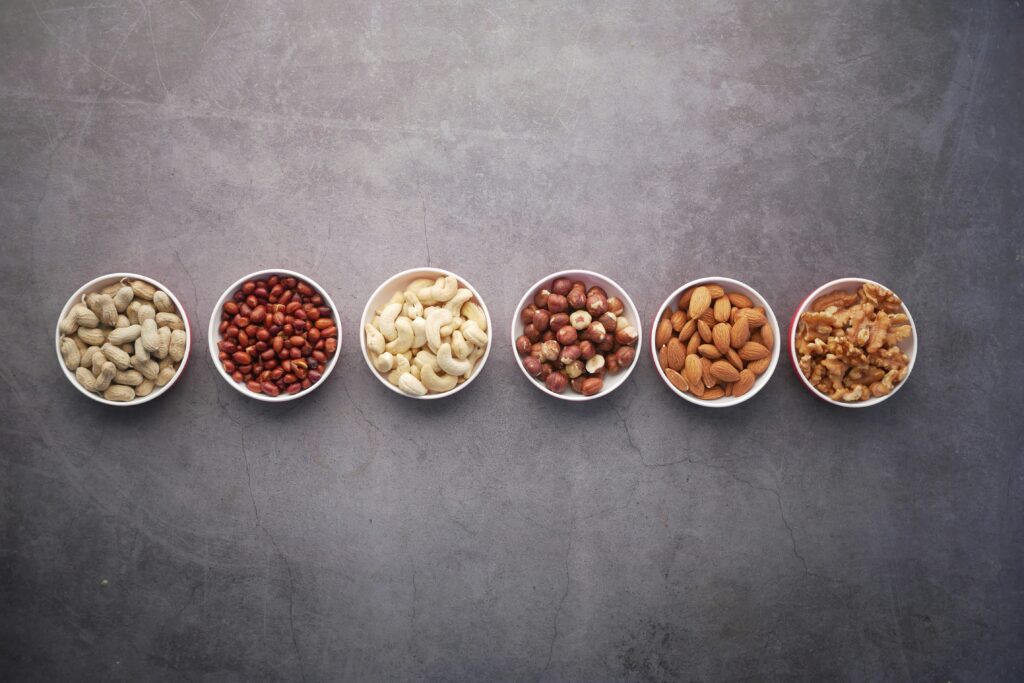
When searching for nutrient-dense foods to enhance your diet, look no further than nuts and seeds. These crunchy and satisfying morsels are the ultimate health-boosting powerhouses. Packed to the brim with healthy fats, proteins, vitamins, and minerals, nuts and seeds deliver a wealth of benefits in a tiny, bite-sized package.
Consider how almonds, with their delicate flavor, offer both calcium and Vitamin E, which are essential for bone and skin health respectively. Similarly, flaxseeds and chia seeds are stellar sources of omega-3 fatty acids, which are crucial for maintaining heart health and reducing inflammation.
Adding to their impressive repertoire, nuts and seeds also contain dietary fibers, which are beneficial for digestive health and can aid in stabilizing blood sugar levels. This makes them not just a wise choice for snacking but also a strategic one for managing appetite and supporting long-term health goals.
Furthermore, the versatility of nuts and seeds is nearly unmatched. Sprinkle them over salads for added crunch, blend into smoothies for a protein kick, or mix into baked goods for a nutrient infusion. Their adaptability in the kitchen means that they can be seamlessly incorporated into meals throughout the day, ensuring that you don’t miss out on their health-promoting qualities.
As we further explore the contributions of nuts and seeds to our overall well-being, let’s not overlook the practicality they offer. They are a portable and convenient snack, perfect for those on-the-go moments when you need a quick energy boost without sacrificing nutritional value.
Nuts and seeds are more than just snacks; they are small but mighty allies in our journey towards a healthier life. By regularly including them in our diet, we take an easy, yet effective step in fortifying our bodies against life’s daily stresses.
Avocado: The Versatile Fat-Friendly Superfood
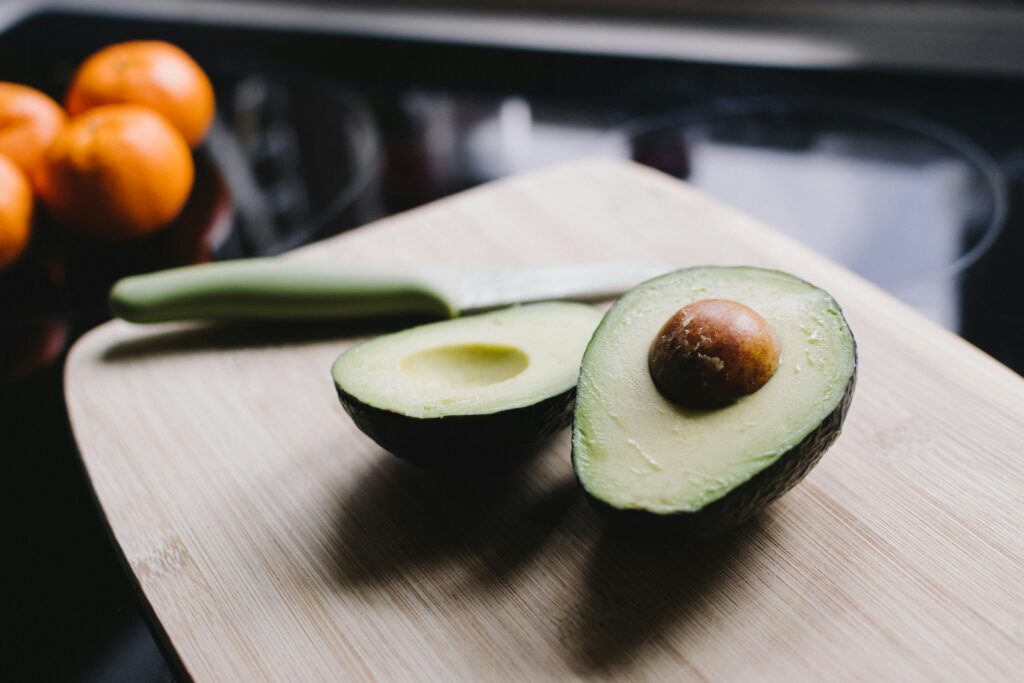
Step into the world of health-conscious eating, and the avocado often takes center stage. Renowned for its smooth, buttery texture and versatile nature, this superfood is an exceptional source of healthy fats, particularly monounsaturated fat, which is beneficial for heart health and can help manage cholesterol levels.
Avocados shine as a source of fiber, too, which aids in digestion and provides a feeling of fullness that can help curb overeating. Additionally, they pack a variety of essential nutrients, including potassium, which assists in blood pressure regulation, and folate, critical for cell repair and during pregnancy.
What sets the avocado apart is not just its nutritional profile but also its adaptability in the culinary world. It meshes effortlessly with both sweet and savory dishes. Spread it on toast for a quick and nutritious breakfast, dice it into salads or sandwiches for a creamy texture, or blend it into smoothies for an enriching thickness.
Moreover, avocados serve not just as a food but also as a healthy fat substitute in baking, providing moisture without the need for butter or oil. Their mild flavor and rich consistency make them an ideal ingredient in vegan and vegetarian cuisines, where they can even stand in for cheese or cream.
As we embrace avocados in our daily diets, we also celebrate the convenience they offer. They can be eaten raw, mashed, or sliced and are readily available in markets around the world. This accessibility reinforces their status as a staple for those seeking a healthy, well-rounded diet.
In summary, avocados go beyond being merely a trendy food item. They are a nutrient-dense, fat-friendly food that can elevate the healthfulness of our eating habits while also satisfying our taste buds with their unique, luxurious creaminess.
Quinoa: The Gluten-Free Grain with a Complete Protein Profile
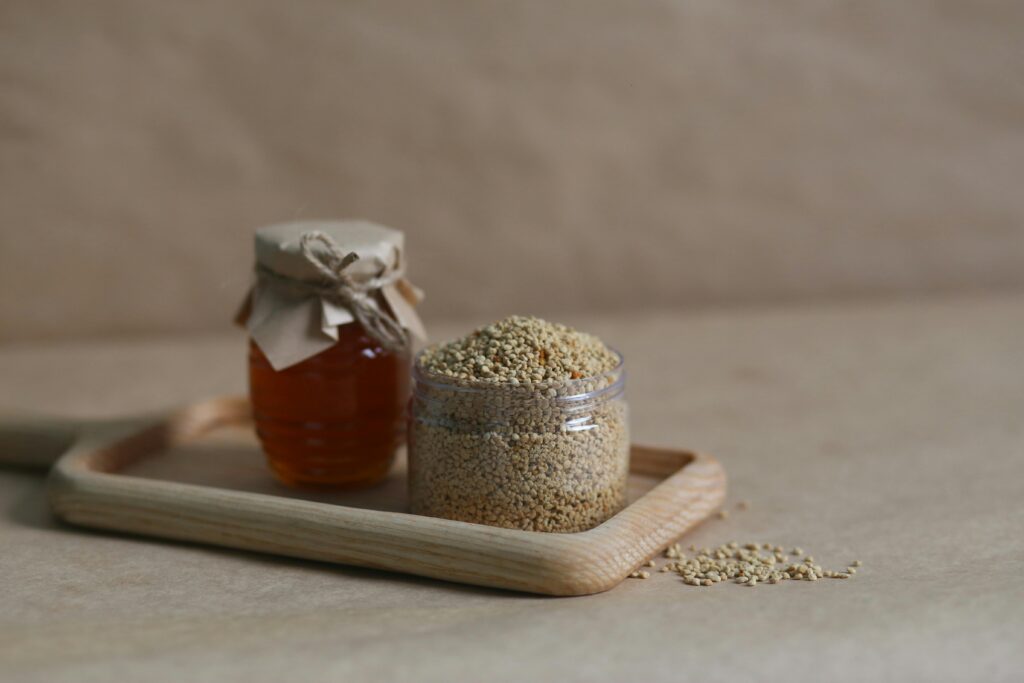
Embark on a journey into wholesome eating, and you’ll inevitably encounter quinoa, a grain that has gained well-deserved acclaim in health circles. Heralded as a superfood, quinoa stands out for being gluten-free and boasting a complete protein profile, containing all nine essential amino acids that the body cannot produce on its own.
Quinoa’s benefits are multifaceted. It’s not only rich in protein, but it’s also an excellent source of fiber, promoting digestive health and contributing to a feeling of satiety. Furthermore, it comes packed with iron, magnesium, and B vitamins, making it a nutritional powerhouse that supports energy production and overall vitality.
What truly elevates quinoa is its culinary versatility. Its slightly nutty taste and fluffy texture make it a delightful substitute for rice or pasta. It can serve as a robust base for salads, a hearty addition to soups, or even be used to create innovative desserts, proving that health and flavor can indeed coexist.
Integrating quinoa into your diet is also a strategic choice for those managing celiac disease or adhering to a gluten-free diet, offering a safe and nutritious alternative to conventional grains. Its high protein content is particularly beneficial for vegetarians and vegans, who may seek additional plant-based protein sources.
Moreover, quinoa is simple to prepare, requiring only a quick rinse and some boiling water to become a dish that can stand alone or complement a variety of meals. Its ease of preparation, combined with its health benefits, makes quinoa a smart addition to any meal plan.
In essence, quinoa is more than just a trendy health food; it’s a testament to the delicious possibilities within the world of natural, whole foods. By incorporating quinoa into your eating habits, you enrich your diet with a gluten-free, protein-rich grain that is as nourishing as it is satisfying.
Green Tea: The Antioxidant Powerhouse Beverage

Dive into the realm of health beverages, and green tea consistently emerges as a top contender. Esteemed for its high antioxidant content, this ancient brew is associated with an abundance of health benefits. Its primary antioxidants, known as catechins, are powerful agents in the fight against cellular damage and have been linked to a reduced risk of chronic diseases.
Green tea is not just about antioxidants; it also plays a role in enhancing mental alertness, thanks to its modest caffeine content. Alongside caffeine, the presence of the amino acid L-theanine works to improve brain function, providing a stable release of energy without the jitters commonly associated with coffee.
The advantages of green tea extend well beyond internal health. It has also been acclaimed for its potential in weight management. Catechins can boost metabolism temporarily, which in combination with a balanced diet and regular exercise, may aid in weight loss efforts.
Moreover, green tea is incredibly adaptable. Enjoy it hot or iced, use it as a base for smoothies, or even incorporate it into recipes for a healthful twist. Its slightly astringent taste complements sweet and savory flavors alike, making it a refreshing beverage choice no matter the occasion.
Furthermore, green tea’s simplicity is one of its most inviting attributes. It requires minimal preparation – just steeped leaves in hot water – making it an easy addition to your daily routine with maximum health benefits.
In summary, green tea is truly an antioxidant powerhouse beverage. Its positive impacts on physical and mental health, coupled with its versatility and ease of preparation, solidify its status as a must-have in any health-conscious individual’s diet.
Practical Tips for Incorporating Superfoods into Your Everyday Life
Navigating the world of nutrition can be overwhelming, but integrating superfoods into your routine is simpler than it might seem. Start with a plan, actively seeking to include a variety of superfoods in your weekly grocery list. This ensures that these nutrient-dense choices are on hand when you’re ready to prepare your meals.
Firstly, focus on breakfast, often hailed as the most important meal of the day. Sprinkle chia seeds or ground flaxseeds into your morning oatmeal or yogurt for a fiber-rich start. These additions are small but powerful, fortifying your breakfast with omega-3 fatty acids and essential minerals.
Next, explore the wide range of superfoods available for snacking. Swap out processed snacks for raw nuts, which offer healthy fats and can keep hunger at bay. For a sweeter option, reach for dark chocolate, which is high in antioxidants, or snack on berries, known for their high vitamin C and fiber content.
Additionally, aim to build your meals around superfoods. A lunchtime salad becomes a nutrient explosion when you add kale, spinach, or mixed greens and top them with a handful of quinoa or some sliced avocado for satisfying healthy fats. Switch out white rice for nutrient-dense sweet potatoes or cauliflower rice at dinner for an easy, healthful substitution.
Don’t forget that superfoods can also be incorporated into your existing favorite recipes. Boost soups and stews with lentils or beans, and blend greens or powdered superfood supplements into your smoothies.
Finally, be mindful of food pairings. Combining certain superfoods can enhance their nutritional absorption. For example, pair vitamin C-rich fruits with iron-rich plant sources to improve iron uptake, or consume healthy fats with vegetables to aid in the absorption of fat-soluble vitamins.
In conclusion, embracing superfoods in your diet doesn’t have to be daunting. By adding a sprinkle here, a swap there, and paying attention to the power of pairing, you can effortlessly increase the nutritional value of every meal.
Seamlessly Infusing Superfoods into Your Daily Menu
Transforming the way you eat may appear formidable at first, but integrating superfoods into your diet can be an attainable goal, not to mention a rewarding one. The addition of these foods can not only enhance your meals with a powerful nutritional punch but also bring an array of new tastes and textures.
One key strategy is taking small steps and make changes gradually. Overhauling your diet overnight might be intense and unsustainable. However, by introducing one or two changes per week, you are more likely to stick to these healthier habits.
Remember, patience and persistence are crucial when making dietary changes. The transformation won’t happen overnight, but each small step is a stride towards a healthier you. Celebrate those victories, whether it’s successfully incorporating chia seeds into your morning routine or swapping your normal snack for a handful of nuts.
In addition, don’t barter flavor for nutrition. Superfoods are not just nutrient-dense but they are also diverse in flavors. Exploring new recipes that highlight these foods can keep your meals exciting and satisfying.
To wrap up, immerse yourself in the world of superfoods by making small, gradual, and delicious changes to your everyday meals. You’ll find that with a little creativity and dedication, incorporating these nutrient powerhouses can become a well-enjoyed habit, setting you on the path to lasting health.

Frequently Asked Questions About Including Superfoods in Your Diet
*What are superfoods and why should I eat them?*
Superfoods are foods that are exceptionally nutrient-dense, rich in vitamins, minerals, antioxidants, and other health-promoting compounds. Including them in your diet can improve your overall health, boost your immune system, and reduce the risk of chronic diseases.
*How can I incorporate superfoods into my diet without breaking the bank?*
Focus on seasonal and local superfoods to get the most nutrition for your money. You can also buy in bulk and look out for sales or discounts. Remember that a little often goes a long way with these nutrient-dense foods.
*Can superfoods replace my normal foods?*
Rather than completely replacing your usual foods, think of superfoods as an enhancement. They should complement a balanced diet, not serve as a sole source of nutrients.
*Are there superfoods I can consume if I have dietary restrictions or allergies?*
Certainly! There are superfoods to fit nearly any dietary restriction. For example, those with nut allergies can enjoy seeds such as chia or flaxseeds, while those on a vegan diet can find plenty of plant-based superfoods like kale, quinoa, and berries.
*Is there a risk of consuming too many superfoods?*
While superfoods are healthy, balance is key. Eating a diverse array of foods ensures you get a range of nutrients and prevents overconsumption of any one nutrient.
*How do I know if the superfoods are having a positive effect on my health?*
Look for signs like improved energy levels, a stronger immune system, better digestive health, and overall feeling of wellbeing. Keep in mind that benefits can be subtle and build over time.

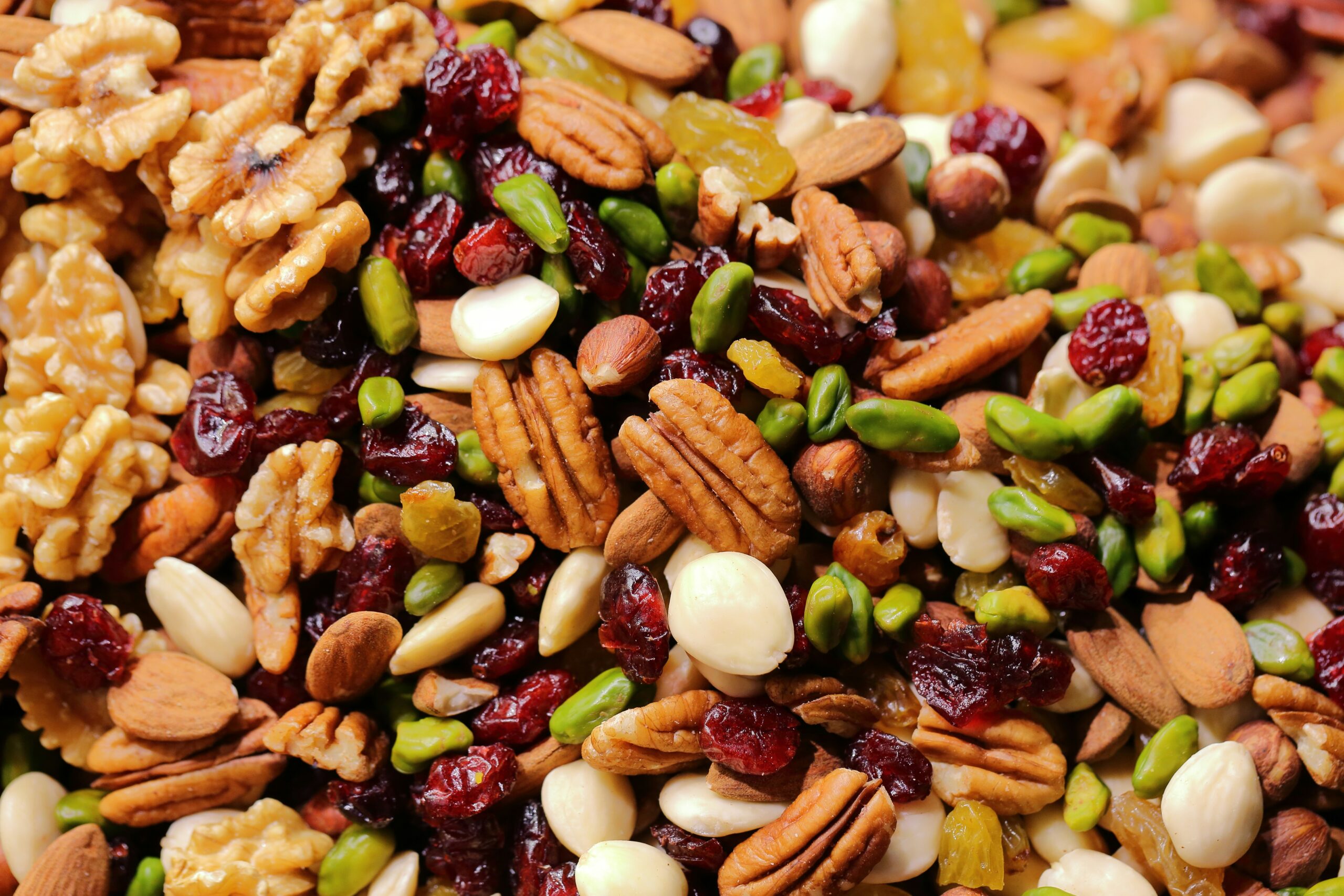
[…] Calorie Deficit: Balancing Nutrition for Long-term […]
[…] can sometimes feel like navigating through a dense jungle, teeming with the latest fad diets, superfood trends, and miracle supplements. In this ever-evolving landscape of wellness, it’s easy to […]